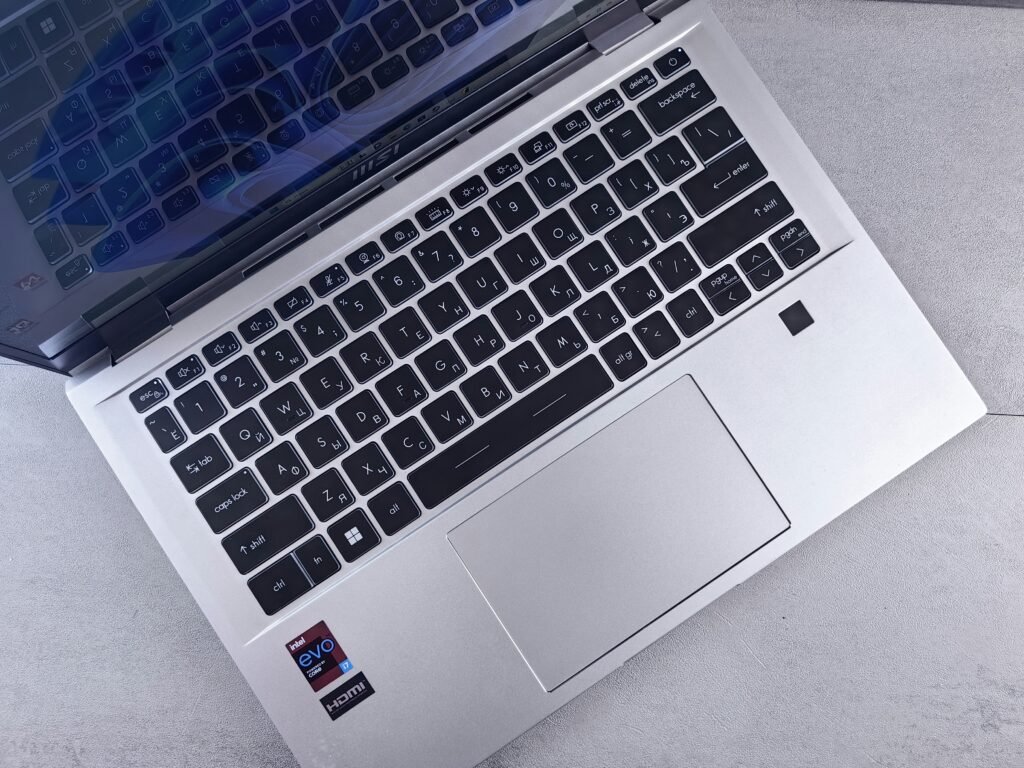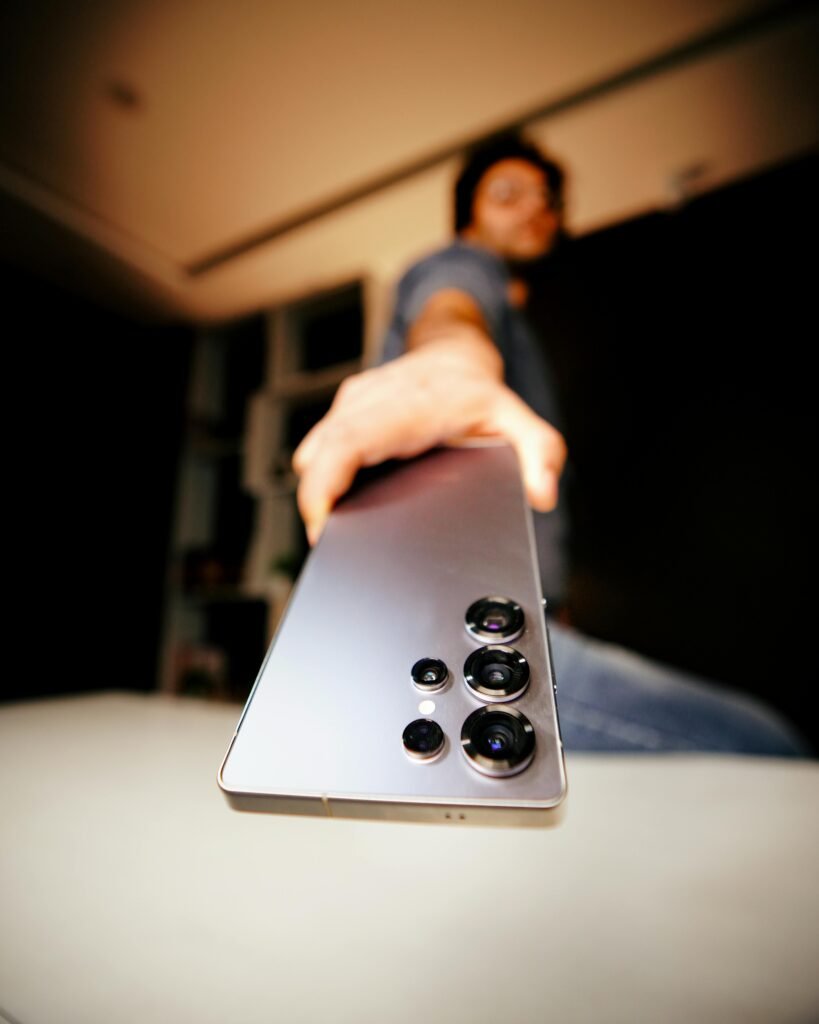
Introduction to Laptop Evolution
The evolution of laptops has been a remarkable journey, marked by significant technological advancements and shifts in societal needs. Beginning with their origins in the 1980s, laptops were primarily characterized by their portability, which was a groundbreaking concept at the time. Early devices were bulky, with limited processing power and small displays, making them far less capable than their desktop counterparts. However, as technology progressed, particularly in the realms of microprocessors, battery life, and display technology, laptops began to see substantial improvements.
By the late 1990s and early 2000s, laptops transitioned from being a luxury for business professionals to becoming essential tools for a wider audience, including students and everyday consumers. The introduction of wireless networking capabilities enabled users to connect to the internet on the go, which further propelled the laptop’s adoption in various sectors. This period also saw the emergence of sleek designs and lighter materials, resulting in enhanced mobility without compromising performance.
As we moved towards the 2010s, the rapid advancement of mobile technology significantly influenced laptop design and functionality. The introduction of high-resolution displays, touchscreens, and solid-state drives represented pivotal shifts. The advent of ultrabooks and hybrid laptops showcased an increasing demand for versatility, allowing users to seamlessly switch between tablet and laptop modes. Furthermore, the rise of cloud computing shifted storage solutions away from physical drives, enabling a more streamlined user experience.
Looking towards 2026, the evolution of laptops is expected to continue at a swift pace, driven by advancements in artificial intelligence, machine learning, and battery technology. These innovations promise to shape the future of personal computing, making laptops more powerful, efficient, and integrated into our daily lives than ever before. In this context, understanding the historical trajectory of laptops provides valuable insights into the innovations that currently define the industry.
Breakthrough in Hardware Performance
The landscape of laptop hardware has witnessed remarkable transformations leading up to 2026, primarily characterized by significant upgrades in processors, memory, and storage. A prominent trend is the shift towards custom silicon chips, specifically designed to optimize performance for mobile computing. Unlike generic processors, these bespoke chips deliver tailored functionalities, allowing laptop manufacturers to fine-tune the balance between speed, energy efficiency, and thermal management. With advancements in fabrication technologies, including smaller nanometer designs, these custom chips are capable of handling increasingly complex tasks with reduced power consumption.
Alongside processor innovations, memory capacities have seen substantial increases. Laptops are now equipped with RAM that can reach up to 128GB and even beyond, facilitating smoother multitasking and improved overall system responsiveness. The combination of larger memory capacities with faster data access speeds enabled by DDR5 technology significantly enhances the performance of modern laptops. This means that users can run multiple applications simultaneously without experiencing lag, thereby improving productivity across various tasks, from gaming to professional software applications.
Moreover, the transition to high-speed solid-state drives (SSDs) has revolutionized data storage within laptops. These SSDs, utilizing PCIe Gen 4 and Gen 5 interfaces, offer incredibly quick read and write speeds, which dramatically reduce boot times and application loading times. The integration of NVMe technology has further streamlined data transfer processes, showcasing how storage solutions have evolved beyond traditional hard disk drives to meet user demands for speed and reliability. Such enhancements in laptop hardware collectively contribute to their improved performance and efficiency, ultimately providing users with a significantly better computing experience in 2026.
Battery Technology and Longevity
As technology continues to advance, battery technology has become a pivotal component in the evolution of laptops. In 2026, the integration of solid-state batteries signifies a monumental shift in how power is managed and utilized in portable computing devices. Unlike traditional lithium-ion batteries, solid-state batteries employ solid electrolytes which not only enhance safety by minimizing fire hazards but also offer higher energy density. This advancement allows for longer usage times between charges, which is a crucial factor for users seeking efficiency and mobility.
Moreover, the innovation in energy-efficient components plays a significant role in extending battery life. Modern laptops are being equipped with advanced processors that optimize power consumption. These processors are designed to intelligently manage their performance based on the tasks being executed, effectively reducing energy consumption during light workloads. Coupled with LED display technology and other components engineered for efficiency, the overall performance of laptops has dramatically improved, allowing users to enjoy extended usability on a single charge.
Another promising development in the realm of battery technology is the potential use of new materials, such as graphene and silicon, which can significantly boost performance. These materials not only promise enhanced capacity but also facilitate faster charging times, catering to the fast-paced lifestyles of today’s consumers. As manufacturers continue to explore these innovations, it can be anticipated that the common challenges associated with battery degradation and lifespan will be mitigated in the years to come.
In light of these advancements, the future of laptops looks bright, with enhanced battery longevity ensuring that devices can meet the demands of both professional and personal use. The pursuit of longer-lasting batteries continues to be a driving force behind the innovation of modern laptops, representing a significant leap in technology that offers convenience and reliability to users around the globe.
Display Technologies: From 2D to 3D and Beyond
The landscape of laptop display technologies has undergone a remarkable transformation, moving beyond traditional 2D screens into a dynamic realm that incorporates three-dimensional (3D) and immersive capabilities. Key advancements such as Organic Light Emitting Diode (OLED) displays have emerged as game-changers in this evolution. OLED technology offers superior contrast ratios, vibrant colors, and enhanced energy efficiency compared to its LCD counterparts, making it increasingly popular among consumers who demand high-quality visual experiences.
Moreover, the refresh rate has emerged as a critical factor in display technologies, especially for gaming and graphic-intensive applications. The proliferation of displays featuring refresh rates of 120Hz or higher has elevated gaming experiences by providing smoother motion and reduced input lag. For graphic designers and multimedia professionals, these high-refresh-rate displays allow for a more fluid visualization of their work, enabling intricate details to come to life.
Integrated augmented reality (AR) and virtual reality (VR) capabilities have further enhanced the relevance of advanced display technologies. Laptops equipped with AR and VR features provide users with the tools necessary to engage with immersive environments, an essential requirement for various industries including gaming, education, and design. By utilizing sensors and specialized software, these devices can create realistic and interactive experiences that redefine how users interact with digital content.
Additionally, advancements in display technology have shifted the focus toward thin and lightweight designs, allowing for increased portability without sacrificing visual quality. As manufacturers strive to push the boundaries of what is possible, we can expect to see even more innovations that not only enhance user experience but also integrate seamlessly with everyday tasks. The shift to more sophisticated display technologies illustrates the ongoing commitment to improving how we interact with our devices, ensuring that laptops remain at the forefront of technological evolution.
Innovative Design and Form Factors
In recent years, the laptop market has experienced significant transformations, driven largely by the demand for more versatile, portable, and aesthetically pleasing devices. Ultra-slim models have gained popularity, showcasing advancements in materials and engineering that allow manufacturers to minimize weight and bulk. With thicknesses often under 15mm, these laptops not only appeal to professionals who travel frequently but also to students and casual users who value style along with functionality.
Another noteworthy design evolution is the emergence of 2-in-1 laptops, which seamlessly blend the capabilities of traditional laptops and tablets. These devices address the growing need for flexibility in both work and leisure environments. The 2-in-1 design allows users to shift easily from typing on a keyboard to engaging with a touchscreen interface, enhancing productivity and user engagement. The hinge mechanisms in these models have witnessed innovation, providing a more seamless transition while ensuring durability, which is essential for daily usage.
Foldable devices are also making waves in the laptop landscape, showcasing cutting-edge technology that redefines what a laptop can be. By integrating foldable displays, manufacturers have introduced laptops that can transform from a conventional clamshell format to a larger canvas when expanded. This innovation is particularly appealing in the realm of multitasking, as users can run multiple applications simultaneously across an extended workspace. These advancements in design cater to a broad spectrum of consumer needs, offering unparalleled convenience and versatility.
Furthermore, sustainability has begun to influence laptop designs, with companies increasingly opting for eco-friendly materials and energy-efficient components. As consumers become more environmentally conscious, the shift towards greener laptops is set to define future innovations. In conclusion, the ongoing evolution of laptop designs reflects the diverse preferences of users in an increasingly mobile world, making laptops not just tools but also essential lifestyle companions.
Enhanced Connectivity Features
The connectivity landscape for laptops has undergone significant transformation, particularly as we look towards 2026. With the introduction of ultra-fast Wi-Fi 7, users can expect unprecedented wireless speeds, drastically reducing download times and improving streaming quality. Wi-Fi 7 leverages advanced technologies such as Multi-Link Operation, which allows devices to aggregate multiple channels, resulting in enhanced bandwidth and reduced latency. These enhancements will benefit virtual meetings, gaming, and the consumption of high-definition content, providing a smoother experience for users.
In parallel, the adoption of Bluetooth 5.2 has further revolutionized connectivity. This update brings improved data transfer capabilities and lower power consumption, making it ideal for maintaining persistent connections with peripherals. Devices such as wireless headphones, keyboards, and mice can now operate with greater efficiency and reliability, contributing to a more productive and user-friendly environment. Bluetooth 5.2 also enhances audio quality, which is crucial for remote workers who rely on high-fidelity sound during conferences or while consuming media.
Add to this the support for 5G networks, and it becomes evident that laptops in 2026 will be primed for a fully connected experience. The integration of 5G technology allows for high-speed internet access even in areas where traditional Wi-Fi may not be available. This capability is particularly pertinent for remote and hybrid workforces, as it facilitates seamless communication among team members regardless of their locations. Instantaneous access to cloud-based resources and applications enables users to collaborate effectively, without compromising productivity.
As laptops evolve, the focus on enhanced connectivity offers not only faster speeds and improved range but also a more integrated approach to working remotely. In this ever-evolving landscape, ensuring reliable and efficient connectivity will be pivotal for users aiming to optimize their workflows and adapt to changing work environments.
Security Innovations: Protecting Data in 2026
The advent of advanced technology has drastically transformed the landscape of laptop security, particularly as we approach 2026. With the increasing prevalence of cyber threats and the importance of data privacy, innovative security features have become essential in protecting sensitive information. One of the most significant advancements is the integration of biometric authentication methods. These techniques leverage unique human characteristics, such as fingerprints, facial recognition, and retinal scans, to ensure that only authorized individuals can access their laptops, offering a level of security that traditional passwords can no longer provide.
In addition to biometric systems, advanced encryption methods have emerged as a critical component in securing data across laptops. Cutting-edge encryption technologies provide robust protection for user data, safeguarding it from unauthorized access, particularly during transmission over the internet. By employing algorithms that are increasingly complex and difficult to decrypt, these methods ensure that sensitive files, communications, and documents remain confidential and secure in a digital-first environment.
Moreover, the implementation of artificial intelligence (AI) in security protocols has revolutionized laptop security measures. AI-driven systems continuously analyze user behavior, identifying patterns and anomalies that may indicate unauthorized access or potential cyber threats. This proactive approach allows for real-time monitoring and quick response to any suspicious activity, further enhancing the security of user data. By leveraging machine learning and predictive analytics, these AI systems can adapt and evolve over time, making them increasingly effective in thwarting breaches and attacks.
As we advance towards 2026, the focus on security innovations in laptops plays a crucial role in ensuring the safety and privacy of users in an increasingly interconnected world. Through the combined use of biometric authentication, sophisticated encryption methods, and AI-enhanced security protocols, individuals can feel more confident in the protection of their personal and professional data against emerging threats.
Sustainability in Laptop Manufacturing
The importance of sustainability in laptop manufacturing has surged in recent years, driven by heightened consumer awareness and the pressing need to reduce environmental impact. In 2026, manufacturers increasingly prioritize sustainable practices, leading to significant changes in how laptops are produced and marketed. Key aspects of this evolution include the incorporation of recycled materials, energy-efficient production methods, and the adoption of a circular economy model.
One significant development is the use of recycled materials in laptop components. Companies are increasingly using plastics sourced from post-consumer waste and metals reclaimed from e-waste. This initiative not only reduces the demand for virgin resources but also lessens the environmental burden associated with mining and manufacturing new materials. By the year 2026, several leading brands have committed to utilizing a substantial percentage of recycled materials in their products, appealing to environmentally conscious consumers.
In parallel, energy-efficient production methods have become a focus. Manufacturers are investing in technologies and practices that minimize energy consumption during the manufacturing process. By integrating renewable energy sources such as solar and wind power, companies not only lower their carbon footprint but also enhance brand appeal among consumers who prioritize sustainability in their purchasing decisions.
The concept of circular economy is gaining traction within the industry as well. This model encourages the design of laptops that can be easily repaired, upgraded, or recycled at the end of their life cycles. By fostering a system where products are made to last longer, manufacturers can help reduce the volume of electronic waste, a key concern in the tech industry. As consumer preferences shift towards sustainable choices, it becomes crucial for laptop manufacturers to adapt to these changing demands, ensuring that their products align with environmentally responsible values.
The Future of Laptops: What to Expect Next
As we look beyond 2026, several advancements are poised to shape the future of laptops, revolutionizing the way users interact with technology. One of the most significant trends anticipated is the integration of artificial intelligence (AI). As AI capabilities continue to grow, future laptops are likely to incorporate smarter algorithms that can enhance performance and user experience. This integration may facilitate predictive analytics, allowing devices to anticipate user needs and adjust resource allocations accordingly, thereby optimizing workflow and productivity.
Additionally, the role of cloud computing is expected to expand. Laptops will increasingly rely on centralized cloud resources to perform complex tasks, enabling lighter hardware configurations while minimizing internal storage requirements. This shift will not only provide users with access to vast resources but also allow for faster data processing and retrieval, significantly enhancing overall functionality. Moreover, such a paradigm shift may lead to broader collaboration capabilities, as documentation and software become more accessible and easy to share in real-time across multiple devices.
In tandem with these trends, breakthroughs in hardware and software are anticipated to further redefine user experience. Innovations in display technology, such as flexible and foldable screens, could lead to more portable and versatile laptop designs, catering to the growing demand for devices that adapt to diverse user environments. Furthermore, the introduction of augmented reality (AR) and virtual reality (VR) features could transform how users engage with applications, creating immersive environments that facilitate work and leisure activities.
With the convergence of AI, cloud computing, and hardware advancements, the future of laptops is shaping up to be not only more powerful but also more intuitive and user-friendly. As these technologies evolve, they will enable laptops to seamlessly integrate into daily life, enhancing both personal and professional activities in ways previously unimagined. This ongoing evolution is indicative of a brighter, more connected future for laptop users globally.




